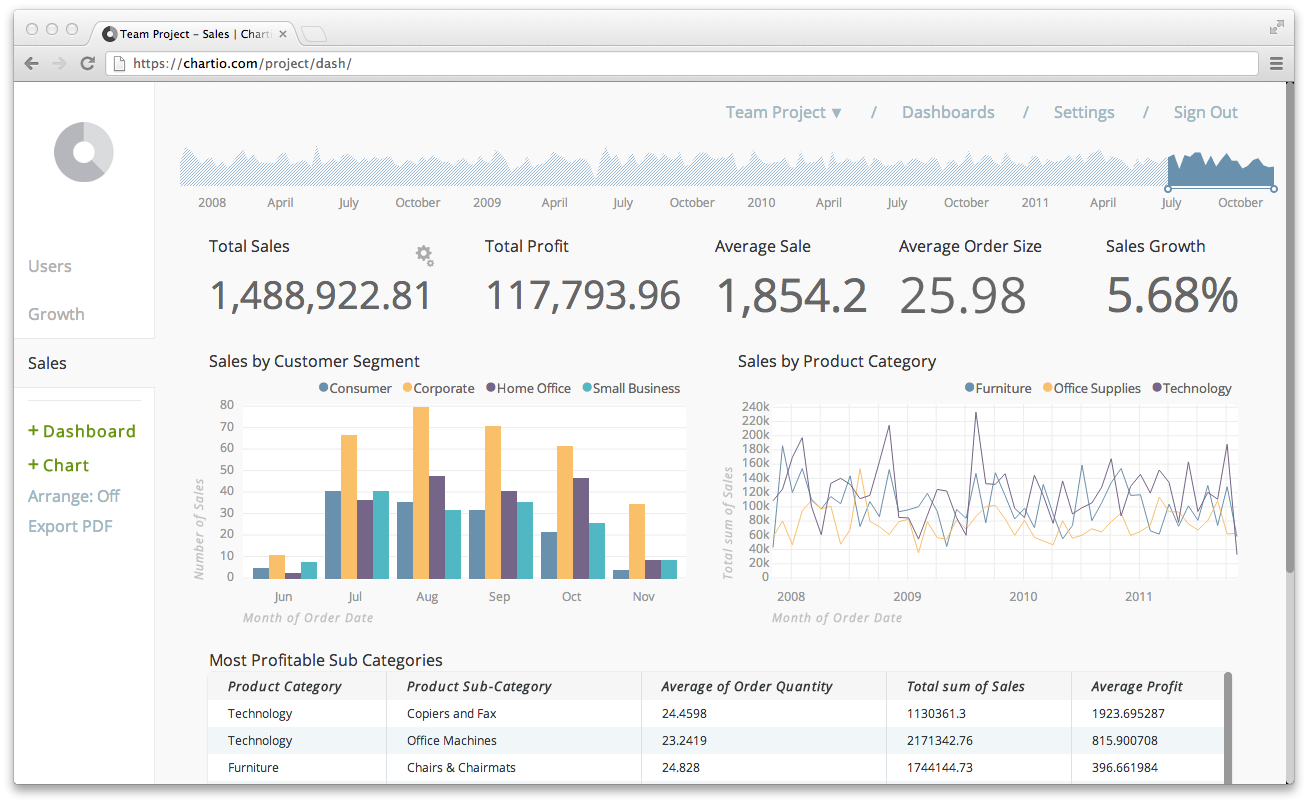The cloud data analytics industry has been growing significantly over the last few years and is expected to almost double in the next two years.
According to IDC, the worldwide business analytics market will grow from $37.7 billion in 2013 to $59.2 billion in 2018. While the Harvard Business Review Analytic Services Survey from July 2015 showed that business and technology managers are expecting cloud-based analytics tools to nearly double compared to current usage, as shown below (green = now, blue = in 2 years).

Cloud-based analytics is being fueled, in part, by:
- measurement demand,
- the lower costs of data storage and processing,
- and the exponential increase of devices capturing data (IoT).
Much like the software industry, that adopted SCRUM, business analytics projects need to prioritize delivering value and be able to evolve rapidly and iteratively with business needs.
This is where cloud data analytics is revolutionizing business analytics.
Cloud Computing
The catalyst for the cloud analytics revolution
Thanks to cloud computing lower costs, data storage and processing have been democratized, much like photography, drones, GPS and cinema cameras, just to name a few.
In spite of the democratization of data storage and processing with cloud computing, there are many organizations struggling to embrace a data-driven culture, namely due to:
- Siloed and outdated data
- Complexity of data access
- Lack of know-how for analysis
- No analytics governance
- Highly manual, time-intensive reporting processes
What is cloud data analytics?
And how it can help your organization become more data driven?
Cloud data analytics are turnkey solutions that allow organizations to aggregate, visualize and collaborate on data.
Many of these solutions are productizing the most common business problems, enabling businesses to start acting on data much faster than deploying a custom solution. Somes cases include:
- Churn Analysis
- Customer Lifetime Value
- Forecasting
- Customer Segmentation
ChartIO Dashboard

Cloud data analytics solutions are increasingly common, easier to work with, more accessible and faster to deploy. These solutions will be key to a transformational change in the way organizations achieve better outcomes from using data.
It’s time to break data silos and manual processes and promote a human but data-driven culture.
Cloud Data Analytics Benefits
A new generation of cloud analytics solutions.
Recently, a wave of new analytics solutions has been revolutionizing the way organizations use data.
Cloud data analytics solutions are democratizing data-driven culture.
Organizations that adopt cloud data analytics typically benefit from:
- Lower costs on technology
By connecting with multiple data sources through easy to use data connectors and not having to deploy your own IT infrastructure. - Consistent data across the organization
Develop a single and easily accessible version of the truth across your organization. - Increased value and speed of data insights
Through productized analysis you have highly valuable and otherwise complex analysis with a click of a button. - Cost savings in report preparation & analysis
By integrating data and visualization in a single platform and productizing analysis. - More insights by creating additional context around data
By enabling stakeholders to collaborate on the data you get additional context, fundamental to drive insights and action from data.
Some of the cloud data analytics solutions are being offered by traditional BI players, others are from startups who’s sole purpose is to democratize how data is consumed.
Below is a list of startups and well-established companies that are driving cloud data analytics:
Startups
Well established Companies
- Amazon Quicksight
- Oracle Data Visualization
- Microsoft Cloud Platform
- Microsoft PowerBI
- Roambi
- Splunk
- SAP Cloud Analytics
- Tableau
- Teradata
What cloud data analytics means to business leaders
Cloud data analytics solutions are democratizing data-driven culture and revolutionizing the business analytics world with lower costs, faster implementation and productized analysis. With the right guidance creating a data-driven culture is now easier and cheaper than ever.
For more on the rise of cloud data analytics check out, The Rising Cloud Of Business Analytics by the Harvard Business Review, and Tableau’s Why Business Analytics in the Cloud.
What’s your view on cloud data analytics? Share it in the comments.